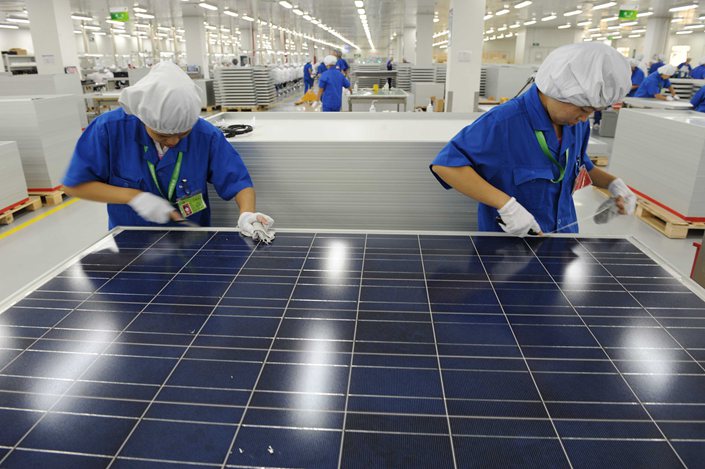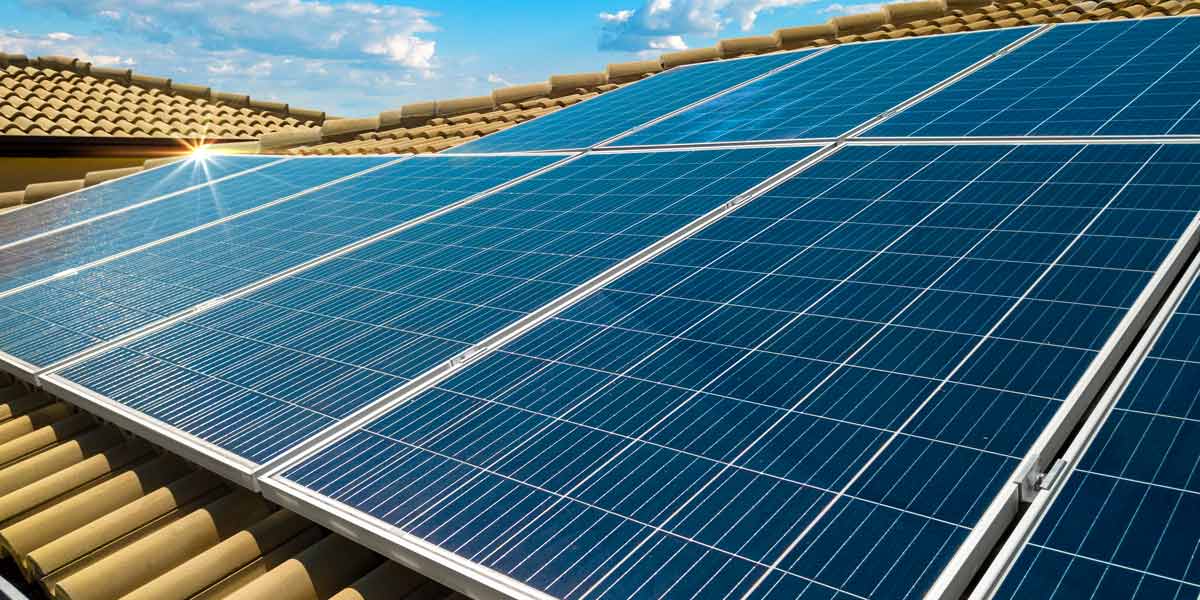9 Simple Techniques For Affordable Solar Panels Pa
9 Simple Techniques For Affordable Solar Panels Pa
Blog Article
Home Solar Power Installation PA: Our Firm Focuses On The Installation And Management Of Photovoltaic Energy Systems
History and Development of Photovoltaic Panel Business
The creation of photovoltaic panel business can be traced back to the 1800s when Alexandre Edmond Becquerel discovered the photovoltaic effect. Would he have envisioned how his discovery would transform the method we harness energy?
Early Starts

In 1954, Bell Labs established the very first practical solar battery. This marked a significant milestone in the history of solar power. They were initially used to power area satellites, however who understood this was just the beginning?
Advancement and Development
- In the 1970s, an energy crisis caused increased interest in renewable resource sources, consisting of solar energy.
- By the 1990s, developments in technology and increasing environmental awareness led to the development of solar panel companies worldwide.
A New Period
As we got in the 21st century, the solar market witnessed an exponential development. The need for clean and renewable energy brought about a brand-new era in the photovoltaic panel industry.
Interesting Realities
- The world's very first solar energy station was developed in 1982 in Hisperia, California.
- By 2019, solar power had actually become the world's fastest-growing source of power.
The journey of solar panel business has been amazing, hasn't it? The future holds enormous capacity, with constant advancements paving the way for a sustainable future. Can we picture a world powered completely by solar power?
Moving Forward
Today, photovoltaic panel companies continue to innovate, pursuing more effective and affordable services. The advancement of solar power has come a long method, and yet, the journey has actually simply begun.
The Core of Photovoltaic Panel Production
Ever wonder what enters into creating those glossy, sun-loving photovoltaic panels? The process is as outstanding as the end product (Residential Solar Panels PA). High-purity silicon, the main active ingredient in solar panels, undergoes numerous transformations to ensure its performance and resilience
From Sand to Silicon
Crystalline silicon, the backbone of a lot of photovoltaic panels, originates from easy sand. It's a remarkable journey, isn't it? The sand undergoes a high-temperature response with carbon to form silicon. However, this isn't just any silicon. The silicon used in solar panels is "solar-grade," with a purity of 99.9999%. It's this purity that makes it possible for the panels to effectively transform sunlight into power.
Ingot Formation
Once the silicon is pure enough, it's time to form ingots. Image a big, round block of strong silicon. How is this accomplished? Through a process called Czochralski procedure, where the silicon is melted and then slowly recrystallized. It's a sluggish dance of science, resulting in a solid product that is almost as pure as the raw silicon itself.
Slicing into Wafers
The ingots are then sliced into wafer-thin pieces, like slicing a loaf of bread. Each slice is a prospective solar cell, waiting to harness the power of the sun. Did you know that the silicon wafers are only about 200 micrometers thick? That has to do with half the thickness of a human hair! The procedure requires accuracy and persistence, however the result is a set of wafers all set to be become solar cells.
Creating Solar Battery
With the wafer ready, it's time for the magic to occur. The silicon wafer is 'doped' with other components like phosphorous and boron to develop an internal electrical field. It's this field that allows the conversion of sunshine into electrical energy. Complex, isn't it?
Assembly and Quality Assurance
Solar cells resemble puzzle pieces that come together to form a solar panel. The cells are soldered together in a grid-like pattern, then covered with a protective layer of glass. The last step involves rigorous quality assurance checks. It's necessary that every solar panel carries out at its peak, wouldn't you concur?
Expert Idea
Always keep in mind that even the most efficiently manufactured photovoltaic panel can lose effectiveness due to dirt and particles accumulation. Routine cleaning can substantially enhance your panels' efficiency.
Understanding the Environmental Impact of Solar Panel Business
Ever pondered the environmental footprint of a solar panel company? Green innovation, such as solar, has changed our energy landscape, however what about the behind-the-scenes impact?
The Manufacturing Process: A Double-Edged Sword
The manufacturing process for photovoltaic panels requires a significant amount of energy. This procedure, known as 'em bodied energy', can be considered as a kind of 'energy financial obligation'. It's a little like obtaining today's sunshine to power tomorrow's energy requirements. But worry not, the energy repayment time is typically much shorter than you 'd think!
- The energy payback period for photovoltaic panels is generally 1-4 years.
- After this period, the energy produced is essentially carbon-free.

Life After Decommission
And what occurs when a photovoltaic panel reaches the end of its life expectancy? Can it simply be tossed into the garbage? No, that would not be very green, now, would it?
A feasible option is recycling. While solar panel recycling is still in its infancy, it holds a world of capacity. Recycling not only keeps materials out of landfills however also reduces the requirement for new raw products.
Responsible Sourcing: More Than A Buzzword
Where does the silicon come from, you ask? The market's demand for silicon and uncommon minerals can lead to destructive mining practices. Accountable sourcing is for that reason essential to minimize damaging ecological effects.
Reduced Carbon Emissions: The Bigger Image
Let's not forget the bigger picture: solar power substantially decreases carbon emissions. When installed, photovoltaic panels produce clean, renewable energy, balancing out their initial production footprint.
In other copyright, the ecological impact of solar panel business is a complicated problem. However, with accountable practices, the pledge of a cleaner, greener future is well within our grasp.
/https://static.texastribune.org/media/images/2014/09/29/SolarINspection.jpg)
Financial Efficiency and Market Share of Solar Panel Business
Ever wondered why some photovoltaic panel companies - Best Solar Panel Company In PA outshine others in the market? What sets them apart? The crucial lies in their financial performance and market share
Financial Efficiency: A Crucial Indicator
Financial performance plays a pivotal function in the success of any service. For photovoltaic panel business, it's no different. Strong financial efficiency enables these companies to purchase advanced innovation, research, and development, consequently developing high-quality, efficient solar panels.
How do they accomplish this? With a concentrate on expense effectiveness and strategic investments. Companies that manage to decrease production expenses without jeopardizing on quality tend to fare better in the market.
Market Share: A Measure of Success
Market share, on the other hand, is a direct reflection of a company's popularity among customers. A high market share implies more homeowners are selecting their photovoltaic panels over competitors.
So, what's the website secret dish for gaining a larger market share? It boils down to consumer complete satisfaction and brand track record. Business that focus on client needs and preserve a favorable brand image are more most likely to capture a larger share of the market.
- Customer Fulfillment: Photovoltaic panel companies that provide reliable items and remarkable customer care tend to have higher consumer fulfillment rates.
- Brand name Reputation: A strong brand track record is developed with time through constant delivery of quality items and services.
Financial Performance and Market Share: The Symbiotic Relationship
Surprisingly, the relationship in between monetary efficiency and market share is not one-sided. They feed off each other. A strong monetary efficiency can increase a business's market share, while a high market share can enhance monetary performance.
As a photovoltaic panel business, balancing these two elements is crucial for long-lasting success. A business that disregards either of them might find it difficult to maintain its position in the competitive solar market.
The Takeaway
What does all this mean for you? Whether you're a property owner wanting to install solar panels or a financier eyeing the solar market, comprehending the financial performance and market share of photovoltaic panel companies is important. They are crucial indications of a business's health and potential for future development.
Report this page